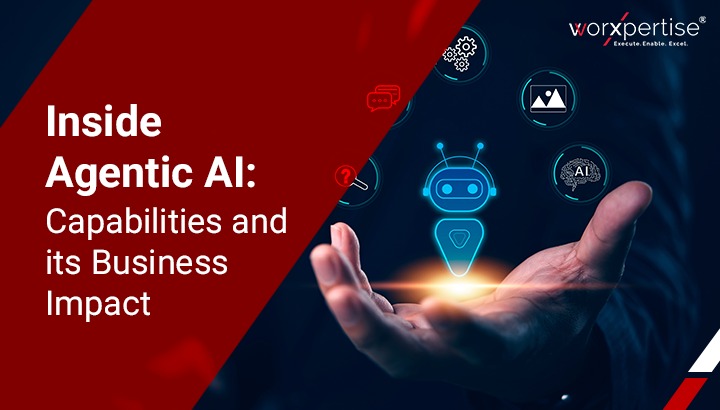
In our last blog, we explored what Agentic AI is and how it represents a step forward from traditional AI models. Now, let’s take a deeper look at how it works. By understanding the underlying architecture of Agentic AI, its components, and its advanced capabilities, we can begin to see why it’s being called the future of autonomous AI systems. Beyond the technical aspects, the real impact lies in how Agentic AI can fuel business-driven operational efficiency, enable smarter decision-making, and unlock new opportunities for growth and innovation. Whether it’s streamlining complex workflows, creating adaptive customer experiences, or supporting large-scale digital transformation, Agentic AI is poised to become a key differentiator for organizations that embrace it early.
At its core, Agentic AI is a system designed to perceive, reason, and act. What makes it unique is not just the intelligence itself, but the structured way in which it is built to learn and operate.
To understand this, let’s break down the key components and the architecture that gives agentic AI its autonomy.
The architecture of agentic AI can be understood as a layered system:
This layered design is what makes autonomous AI systems flexible, scalable, and capable of real-world applications.
The capabilities of agentic AI go beyond traditional automation. Some of the most impactful include:
Agentic AI isn’t just a theoretical concept, as companies are already deploying it, and the performance improvements are tangible. According to McKinsey’s most recent Global Survey on AI, more than 78 percent of companies are now using gen AI in at least one business function (up from 55 percent a year earlier).
Let us see how some companies integrated Agentic AI in their system, and the results spoke for themselves.
By taking over the heavy lifting, they free up teams to focus on high-impact areas like innovation, customer engagement, and strategic growth. For businesses, this means faster time-to-market, stronger resilience in changing conditions, and a sustainable competitive edge.
In our previous blog, we defined what Agentic AI is, and this time we took a deeper look at its architecture and capabilities to show why it matters for business leaders today. With the ability to perceive, plan, act, and adapt, these systems are not just technological tools but strategic enablers. They help businesses streamline operations, uncover new revenue opportunities, and accelerate innovation pipelines.
For industries under pressure to cut costs while delivering more value, Agentic AI provides a path to smarter resource allocation with the help of faster, data-driven decision-making. The real opportunity has never been about replacing human expertise, but about building intelligent collaborators that amplify workforce productivity and give organizations a sustainable competitive edge in a rapidly shifting market.
Author: Pooja Sharma